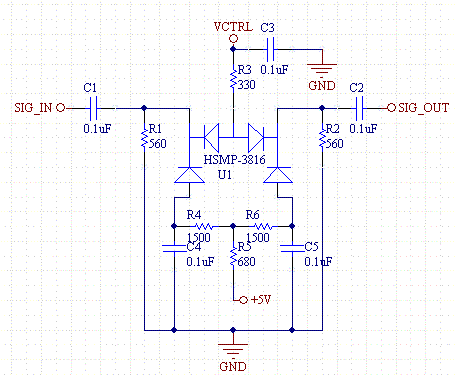Rf attenuators over 400 coaxial surface mount and mmic attenuator models for 50 ohm 75 ohm syetem including fixed attenuators high power attenuators digital step programmable attenuators voltage variable attenuators and more.
Variable rf attenuator circuit.
Pin diode attenuators are a subset of variable rf attenuators and are useful for circuits requiring continuously changing attenuation levels.
Subscribe to receive mini circuits news.
The tee pi and bridged tee each require two different resistor values while the reflection and balanced attenuators need only a matched pair of resistors.
The pin diode variable attenuator is used to give attenuation over a range of about 20 db and can be used in 50 ohm systems.
Attenuator circuit is both linear and reciprocal based on the application the attenuator can be unidirectional or bidirectional.
Dc passing and dc blocking models.
Variable rf attenuators are normally used in applications where it is necessary to continuously vary the level of a signal.
When the attenuator circuit is made symmetrical there will be no difference between the input port and the output port.
It is this factor which makes the pin diode so useful in attenuator circuits.
Pin diodes have advantages over resistive networks and are the ideal rf component for these types of attenuators.
In any rf system there is a need for a constant impedance and this design provides an acceptable match to 50ω over a wide range of attenuation levels.
Variable attenuator circuit.
In figure 4 we can see how the pin diode acts as a current controlled rf resistor.
There are five common attenuator topologies used in microwave circuits the tee the pi the bridged tee the reflection attenuator and the balanced attenuator.
Hello yes you can also a variable resistor.
Or better what you could do is building a variable attenuator through something like this see link where for every wheel with pins upper and lower you have to connect both r l signal and ground wires.
Typically variable attenuators provide a continuous level change by varying an analogue voltage on the input control line.
An increase in bias current will result in a decrease in rf resistance.
One of the simplest forms of variable attenuators is the simple shunt diode type seen below.










